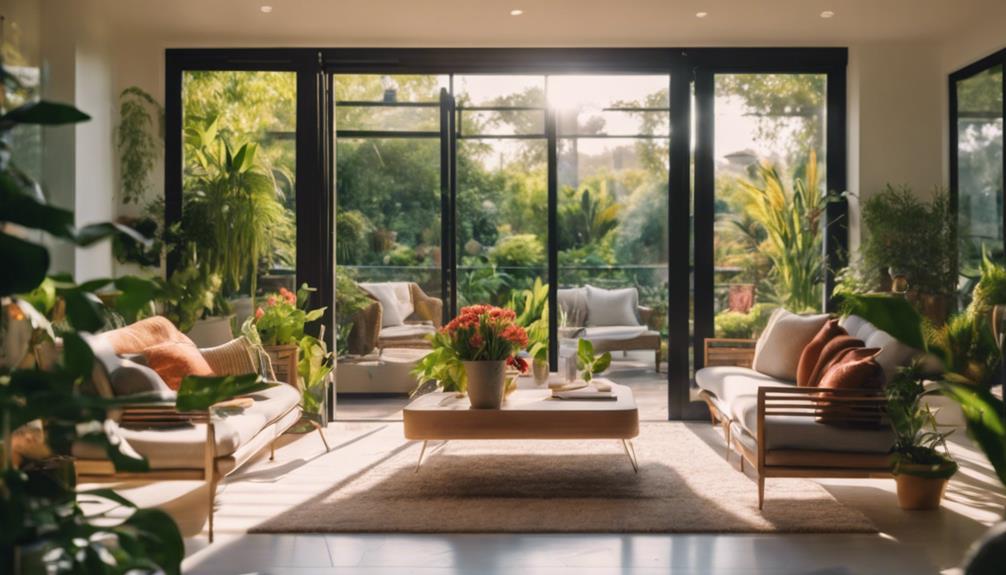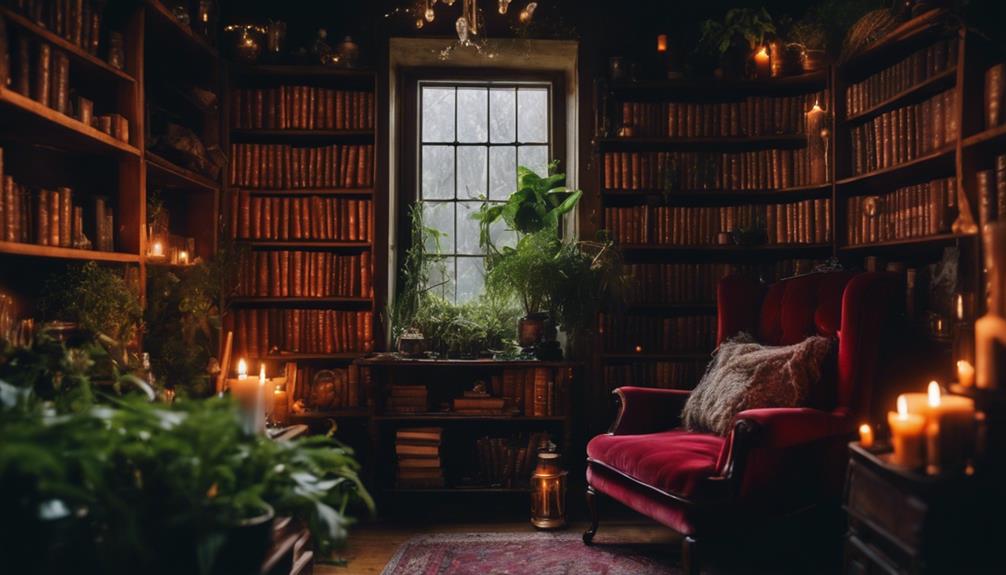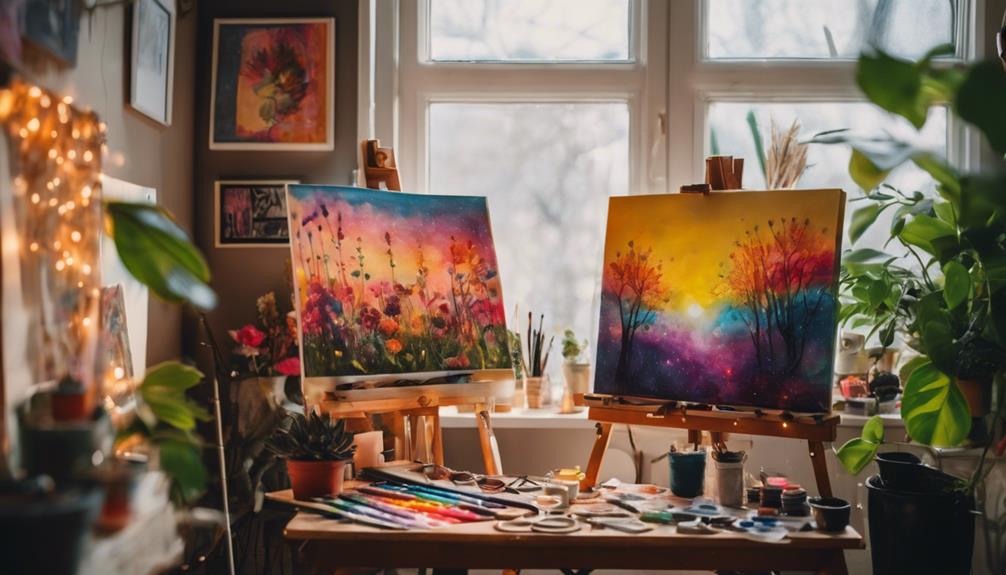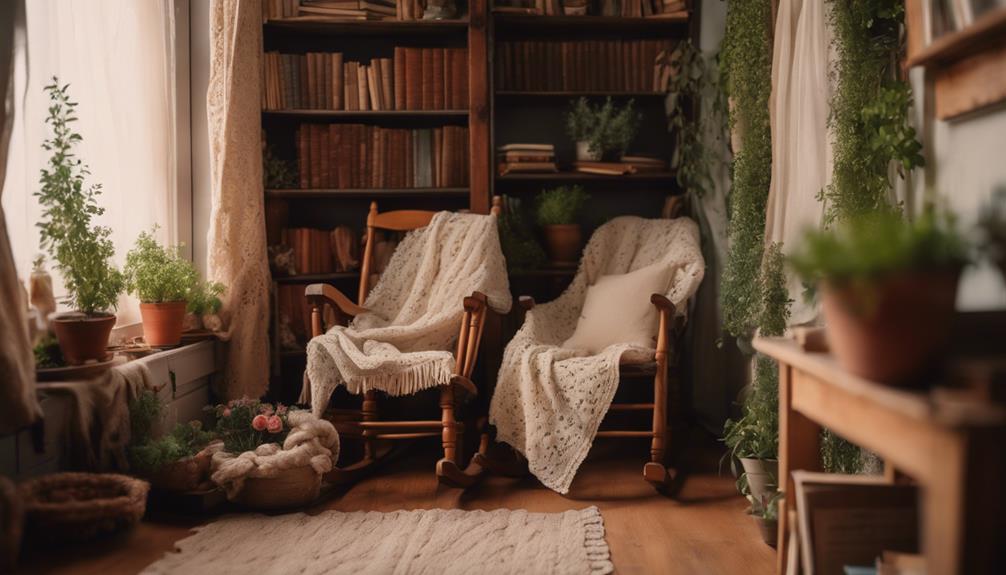To create a seamless flow between your indoor and outdoor spaces, start by evaluating your layout. Use large glass doors for easy access and maximize natural light. Choose consistent flooring materials to blur the lines between indoors and outdoors. Select a complementary color palette for furniture and decor to unify the spaces. Incorporate weather-resistant furniture for style and durability, while adding greenery to connect nature with your living areas. Finally, consider practical areas, like placing the kitchen near outdoor dining. These tips will set you on the right path—discover even more insightful strategies to enhance your space! By seamlessly blending indoor and outdoor living, you’ll create a cohesive and inviting environment that encourages a seamless transition between the two spaces. Consider adding elements like a cozy outdoor fireplace or a covered patio to extend your living area and make it more versatile. With these tips and strategies, you can achieve a harmonious and integrated indoor-outdoor living space that enhances the overall functionality and beauty of your home.
Key Takeaways
- Incorporate large glass doors to provide easy access and maximize natural light between indoor and outdoor areas.
- Utilize consistent flooring materials to create a unified aesthetic and enhance the flow between spaces.
- Choose a complementary color palette for furniture and decor to promote harmony throughout your indoor and outdoor environments.
- Position functional spaces, like dining areas, close to each other to encourage seamless interaction between indoors and outdoors.
Benefits of Seamless Spaces
Seamless indoor-outdoor spaces truly enhance your home's enjoyment by effortlessly blending the comfort of indoors with the tranquility of nature. When you create seamless indoor-outdoor living, you foster a genuine connection to the outdoors, allowing natural beauty to flow into your daily life. This integration not only maximizes natural light but also promotes relaxation and a deeper connection with nature, enriching your overall living experience.
The versatility of seamless spaces accommodates a variety of activities, from family gatherings to peaceful retreats, making it easy to adapt to your lifestyle. You'll find that these areas can be enjoyed year-round, transforming how you use your indoor and outdoor spaces. A well-designed shift contributes to a cohesive aesthetic, enhancing your home's visual appeal.
Moreover, investing in seamless indoor-outdoor living can greatly boost your property value, attracting potential buyers who appreciate modern living. By creating an inviting atmosphere that seamlessly connects your indoor and outdoor areas, you elevate not just your home but also your quality of life.
Planning Your Transition
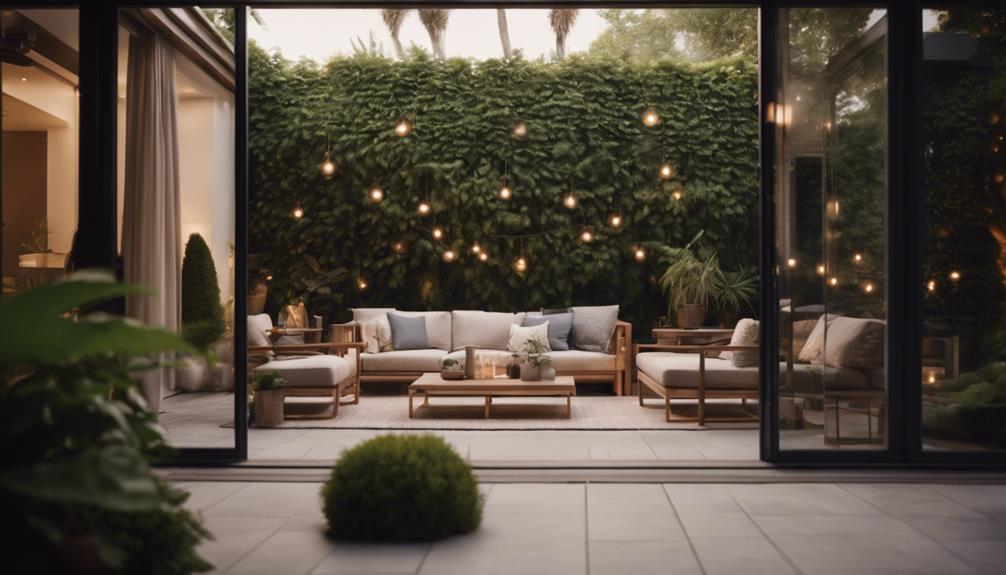
Planning your shift between indoor and outdoor spaces starts with evaluating the layout and features of both areas to enhance their flow.
Begin by identifying any potential obstacles, like structural barriers or uneven ground, that could disrupt the seamless connection you want to create.
Consider incorporating large glass doors to facilitate easy access between the two environments, promoting an inviting atmosphere.
When choosing furniture, opt for weather-resistant pieces that mirror the aesthetics of both indoor and outdoor living. This helps you maintain a cohesive transition that feels intentional and well-designed.
Establish a consistent color palette and select design elements that flow naturally from one space to the other, reinforcing the connection.
For example, if your indoor area features warm earth tones, carry those hues into your outdoor decor to unify the look.
Key Floor Plan Considerations
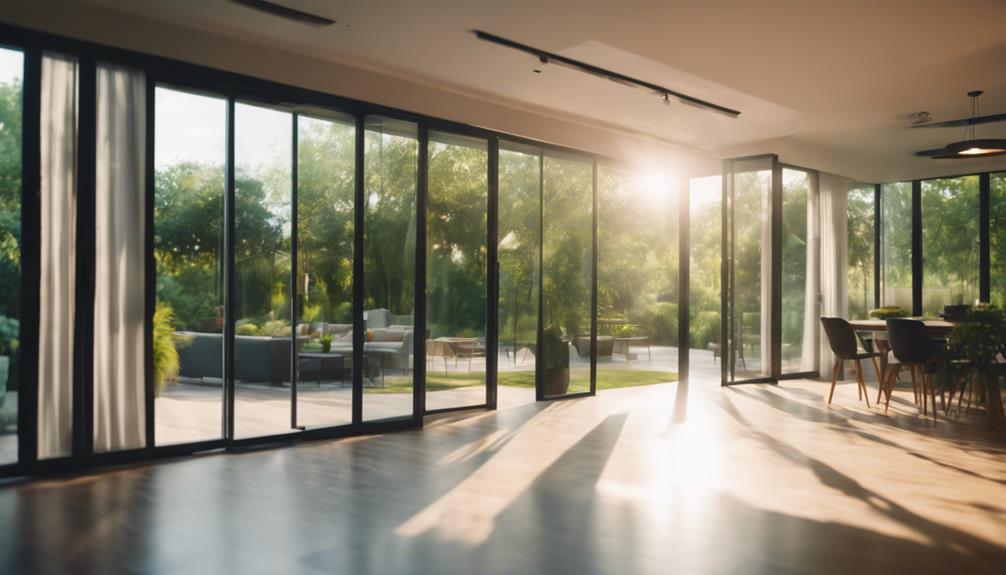
When evaluating your floor plan, focus on how to create indoor-outdoor rooms that enhance connectivity and flow between the spaces.
Start by identifying potential indoor-outdoor spaces that can serve as connecting areas, like patios or terraces. Strategically locate entry points, such as doors and windows, to facilitate easy access and movement, ensuring a clear pathway between your indoor and outdoor areas.
Consider the proximity of functional spaces; for example, placing your indoor kitchen close to the outdoor dining area can create seamless entertaining experiences. Implement design modifications, like open layouts or removing unnecessary walls, to foster a cohesive environment that encourages natural interaction.
As you assess the layout, look for obstacles that may disrupt flow, ensuring your plan supports connectivity and movement.
A well-thought-out floor plan can greatly enhance flow between your indoor-outdoor spaces, allowing you to enjoy a harmonious and inviting atmosphere.
Creating a Cohesive Design
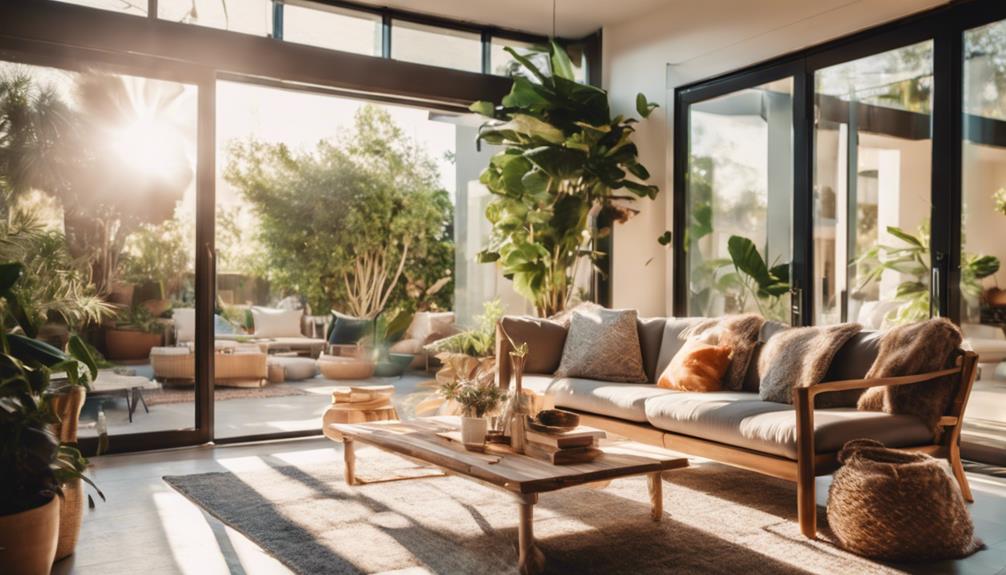
A unified design vision transforms your indoor and outdoor spaces into a harmonious environment that feels inviting and cohesive. To achieve this seamless flow, think of your indoor-outdoor living as one continuous area. Start by selecting consistent flooring materials, like porcelain tiles or natural stone, to enhance visual continuity. This creates a natural connection between spaces.
Next, utilize complementary color schemes across both areas. By choosing colors that resonate with each other, you foster a calming atmosphere, making your home feel connected and inviting. Incorporating multi-functional furniture made from weather-resistant materials is also key. This not only allows for versatility but guarantees your design remains stylish and practical.
Bringing nature indoors is another effective strategy. Large potted plants and hanging vines can bridge the gap between your indoor and outdoor spaces, improving air quality and visual appeal.
Ultimately, a cohesive design integrates all these elements, creating a unified environment that celebrates the beauty of both indoor and natural spaces.
Practical Tips for Integration
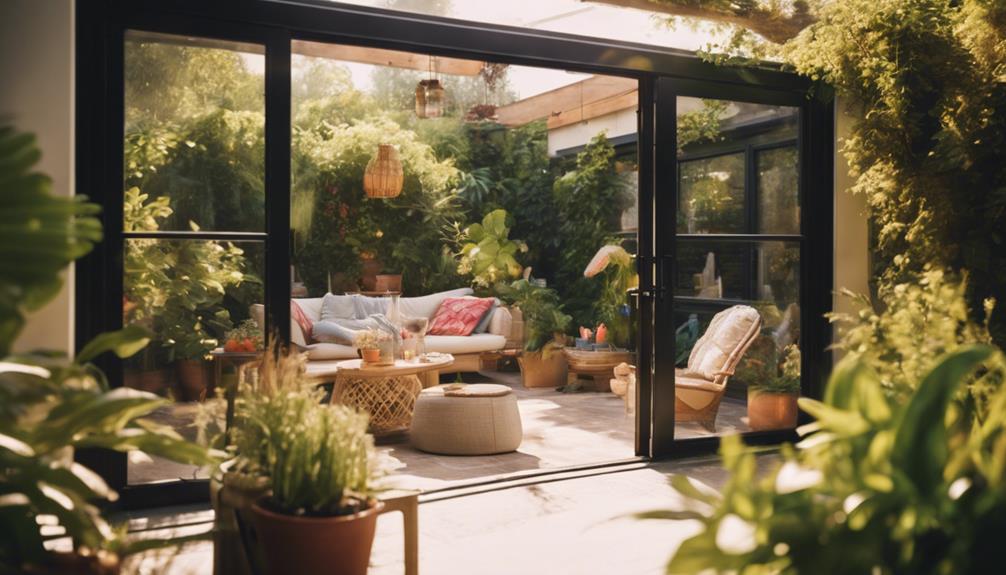
To create a seamless integration between your indoor and outdoor spaces, focus on maximizing natural light through large glass doors and windows that offer unobstructed views. This connection enhances the sense of openness, inviting the beauty of nature indoors.
Using consistent flooring materials, like porcelain tiles or natural stone, fosters a seamless connection, making indoor-outdoor living feel cohesive. Complementary palettes for furniture and decor will promote a harmonious flow between the spaces.
Consider the table below for practical tips:
| Tip | Description |
|---|---|
| Use Large Glass Doors | They provide easy access and maximize natural light. |
| Consistent Flooring | Choose the same material for both areas to enhance unity. |
| Multi-Functional Furniture | Opt for pieces that are stylish and serve multiple purposes. |
| Integrate Greenery | Use plants to bridge the gap and improve air quality. |
Conclusion
Incorporating seamless shifts between your indoor and outdoor spaces can transform your home into a personal paradise.
Imagine sipping coffee as sunlight streams in, blurring the lines between nature and comfort.
By thoughtfully planning your design and keeping a cohesive aesthetic, you'll create an inviting atmosphere that feels timeless.
So, go ahead—bring the outside in and let the fresh air and natural beauty elevate your everyday living experience.
You won't regret it!
